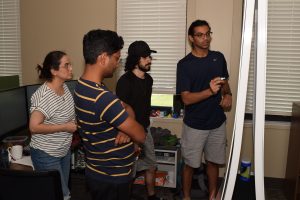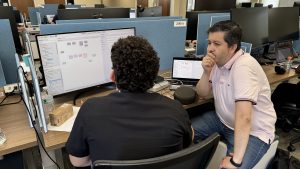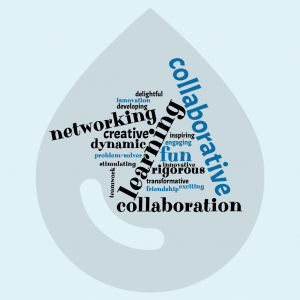
TUSCALOOSA, Ala. — The National Water Center (NWC) Innovators Summer Institute at The University of Alabama (UA) is renowned for pushing the boundaries of water prediction and flood forecasting. Now in its ninth year, this intensive seven-week program, funded by CIROH, continues to bring together graduate students and research professionals from across the United States to tackle some of the most pressing water-related challenges.
A Collaborative Learning Experience
The Summer Institute is a collaborative effort between the NWC, CIROH, the Consortium of Universities for the Advancement of Hydrologic Science, or CUAHSI, UA and the Alabama Water Institute (AWI). This year, 24 graduate students from various universities across the U.S. came together to work on projects under the guidance of five theme leads and other experienced faculty and industry professionals. The program not only advances the research and development enterprise of the NOAA Office of Water Prediction but also fosters lifelong connections among participants and the broader water research community.
“During the first two weeks, participants undergo a bootcamp that equips them with the tools and knowledge needed for their projects,” explained Lanna Nations, director of research education and outreach programs for CIROH and the AWI. “This is followed by five weeks of focused research, culminating in a Capstone Event where they present their findings.”

Diverse Teams, Unified Goals
Students are self-divided into teams, each focusing on unique research questions as part of multiple themes, each guided by one or two theme leads. These teams, guided by their respective theme leads, aim to address critical issues in water prediction and flood risk management. For example, the group “Sweet Home Alabama,” led by Dr. Jonathan Frame of UA, is investigating the use of GOES satellite imagery to improve snow water equivalent predictions, which are crucial for drought management in the Western U.S.
“This program has been an incredible opportunity to apply my background in machine learning to real-world hydrological challenges,” said Savalan Neisary, a second-year Ph.D. student at UA. “The collaborative environment and the support from theme leads like Jonathan Frame have been instrumental in our progress.”
Pioneering Opportunities for Both Students and Theme Leads
While the Summer Institute is often seen as an incredible opportunity for graduate students to gain practical experience and develop their research, it’s also a significant networking platform for theme leads. By participating, theme leads can engage closely with the NWC, build relationships and collaborate with top-tier talent from various institutions.
Moreover, one of the key advantages for both students and theme leads is the potential to contribute to peer-reviewed publications. The program has a strong track record, with dozens of papers published as a direct result of the Summer Institute projects, underscoring the program’s impact and academic value.
Sanjib Sharma, assistant professor at Howard University, possesses a unique perspective on the value of the program, as he previously participated as a graduate student and is now a theme lead.
“Returning to the Summer Institute as a theme lead was a wonderful opportunity to reflect on how my career path has evolved from a former student participant to now HBCU faculty, connecting with and learning from the next generation of students and training them in cutting-edge research,” said Sharma.
A Broader Reach and Inclusive Participation
The Summer Institute is not a UA or CIROH-exclusive program—it’s open to any U.S.-based M.S. or Ph.D. student, regardless of their university’s affiliation with CIROH. This inclusivity extends to theme leads as well, who are often drawn from a diverse range of institutions across the country. This diversity enriches the program, bringing together fresh perspectives and innovative ideas.

Building a Community of Innovators
Beyond the technical achievements, the Summer Institute fosters a strong sense of community. The program begins with virtual meetings months in advance, allowing participants to get acquainted before arriving in Tuscaloosa. Once on-site, the group partakes in team-building activities, evening dinners, and social events designed to strengthen their collaborative efforts.
“The sense of camaraderie here is unparalleled,” said Hassan Saleh, a Ph.D. candidate at Western Michigan University. “We’ve not only gained valuable research experience but also formed lasting friendships.”
Looking Ahead
As the 2024 Summer Institute draws to a close, the participants are eager to share their findings and reflect on their experiences. The projects undertaken this year promise to make significant contributions to the field of hydrology and flood risk management, furthering the mission of CIROH and NOAA to support a water-resilient nation.
“As CUAHSI’s Executive Director, I am very excited to continue our strong partnership with NOAA OWP, UA, and CUAHSI in 2025 to usher in the ten-year anniversary of the National Water Center Innovators Summer Institute,” stated Jordan Read. “This program highlights the depth and breadth of talent in water prediction and helps students build essential collaborative skills as teams pursue innovative projects in service of NOAA research and operations priorities.”
For more information on how to get involved, visit the CUAHSI Summer Institute website. If you’re interested in being a theme lead, please contact Jordan Read.